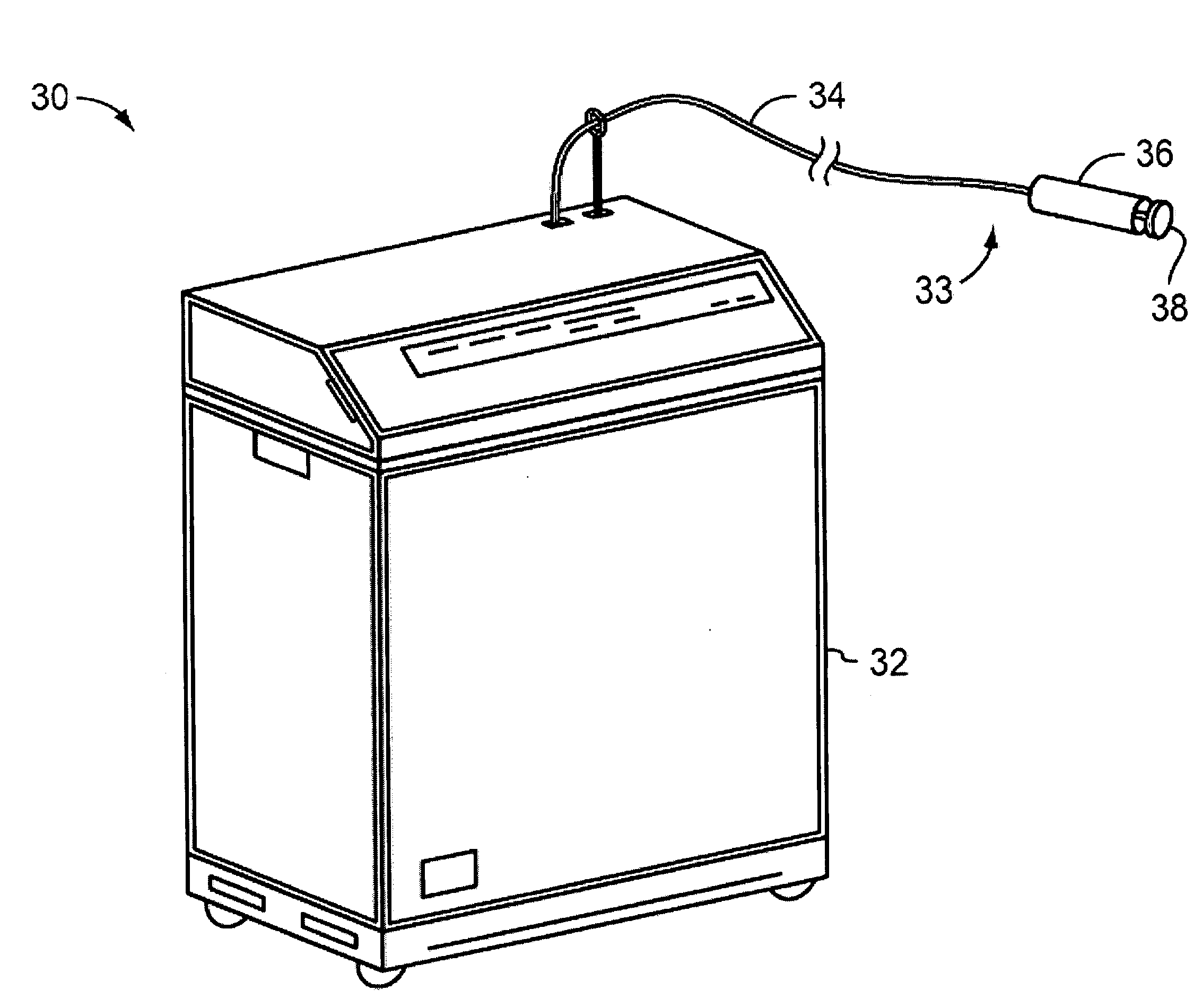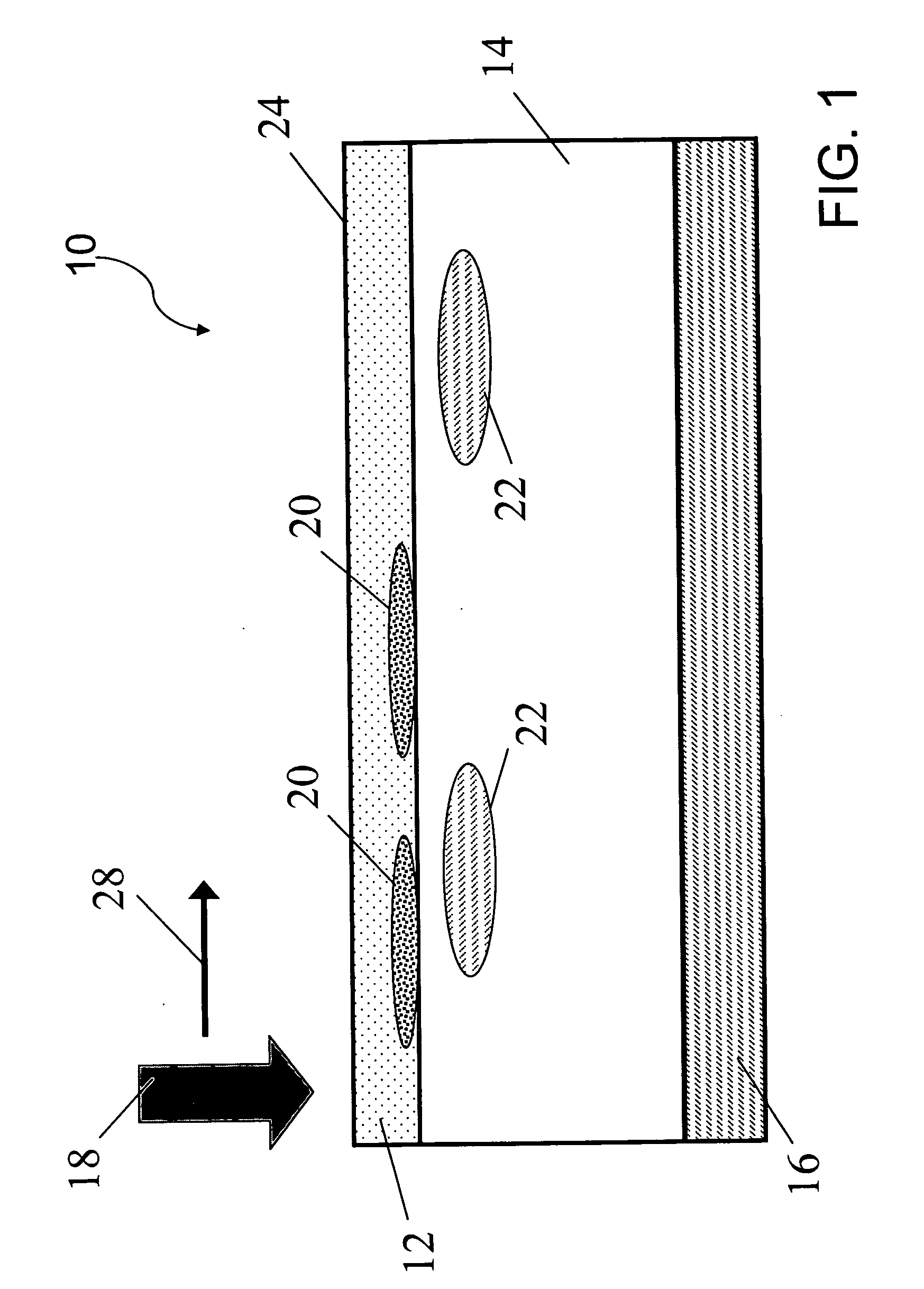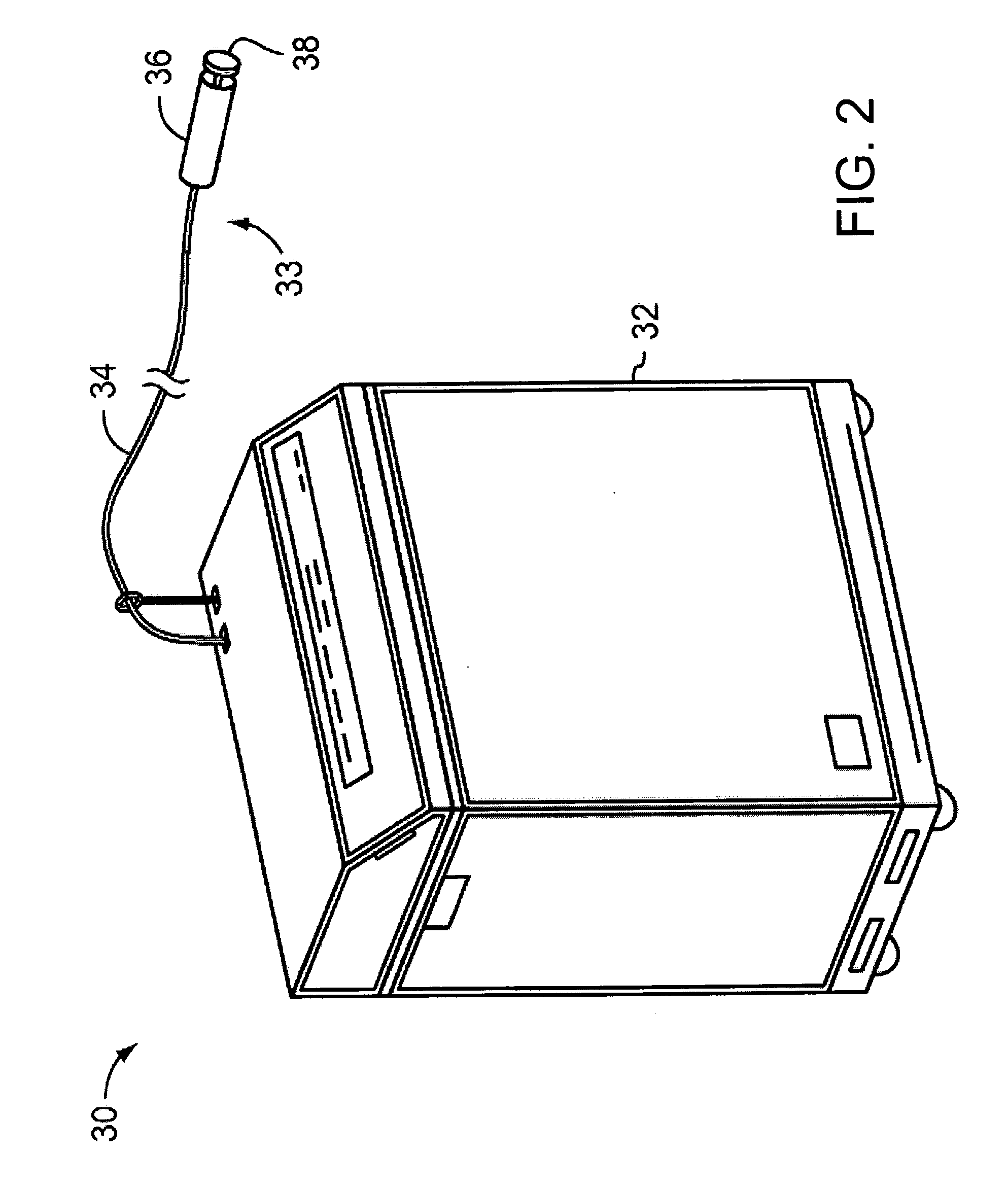Treating dermatological conditions using an alexandrite laser
a laser and dermatological technology, applied in the field of radiation beams, can solve the problems of not being well-suited for hair removal and other dermatological treatments, not being well-optimized for ipl, and various unwanted side effects, and achieve the effects of simple and fast treatment, effective treatment of vascular conditions, and simple and fast treatmen
- Summary
- Abstract
- Description
- Claims
- Application Information
AI Technical Summary
Benefits of technology
Problems solved by technology
Method used
Image
Examples
example treatment
[0049] A variable pulsewidth alexandrite laser was used for facial skin rejuvenation. 15 patients with telangiectasias, facial redness, and / or pigmented lesions were treated with a long pulsed alexandrite laser equipped with a 6-mm spot and a dynamic cooling device (DCD). A pulse duration of 40 ms resulted in the greatest reduction in vascular and pigmented lesions with the least side effects. Once the optimal pulse duration and fluences were determined in a series of test sites, treatment was carried out 3 weeks later in a larger area. The final follow-up was three months after treatment.
[0050] Depending on the fluence level used, pulse durations shorter than 40 msec can cause purpura and unintended epidermal damage, and longer pulse durations are not as effective. During the treatment protocol, larger and bluer telangiectasias (>0.4 mm) tended to respond better than smaller ones. Darker lentigos responded better than lighter ones. Typical threshold fluences for simultaneous vascu...
PUM
 Login to View More
Login to View More Abstract
Description
Claims
Application Information
 Login to View More
Login to View More - R&D
- Intellectual Property
- Life Sciences
- Materials
- Tech Scout
- Unparalleled Data Quality
- Higher Quality Content
- 60% Fewer Hallucinations
Browse by: Latest US Patents, China's latest patents, Technical Efficacy Thesaurus, Application Domain, Technology Topic, Popular Technical Reports.
© 2025 PatSnap. All rights reserved.Legal|Privacy policy|Modern Slavery Act Transparency Statement|Sitemap|About US| Contact US: help@patsnap.com



